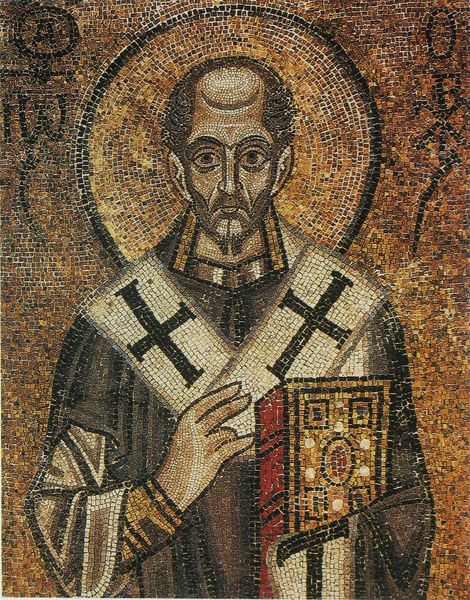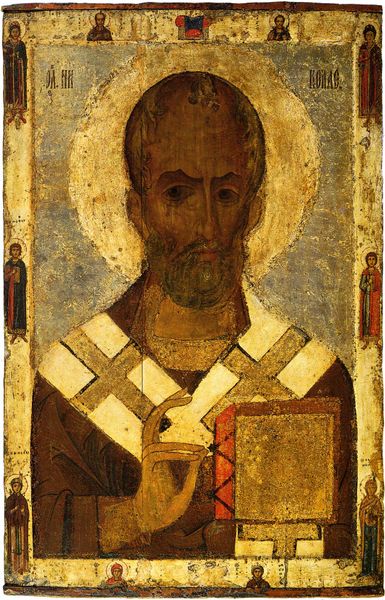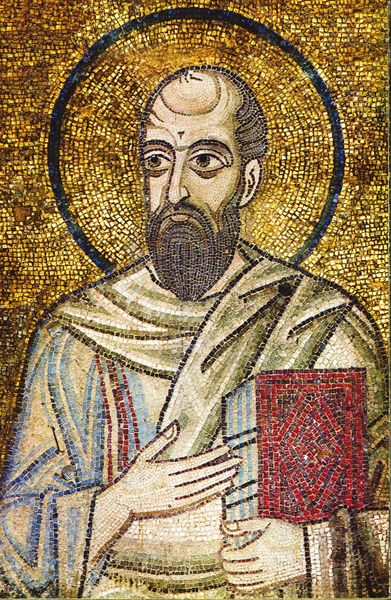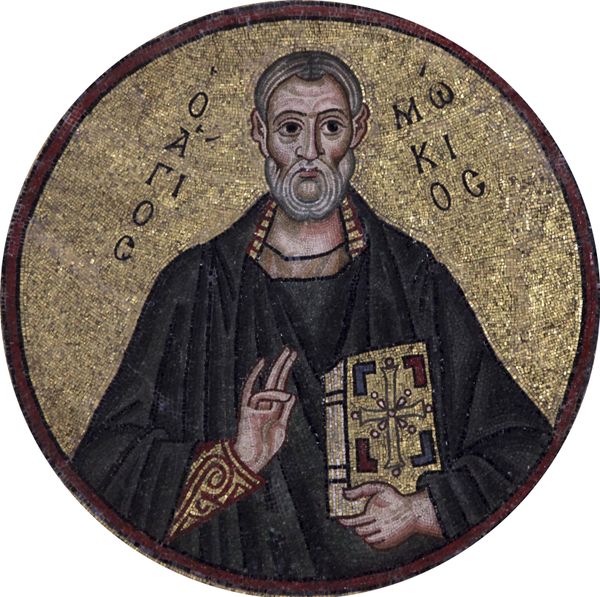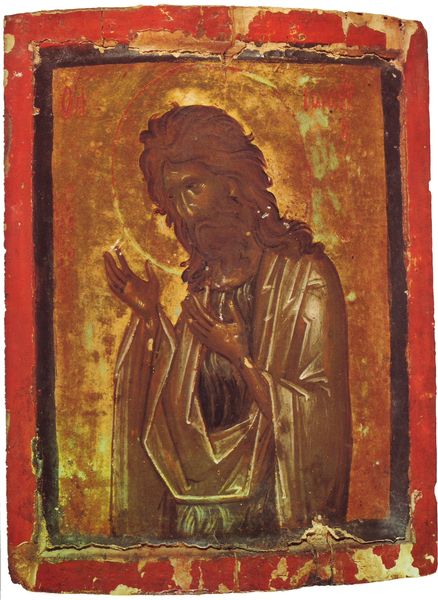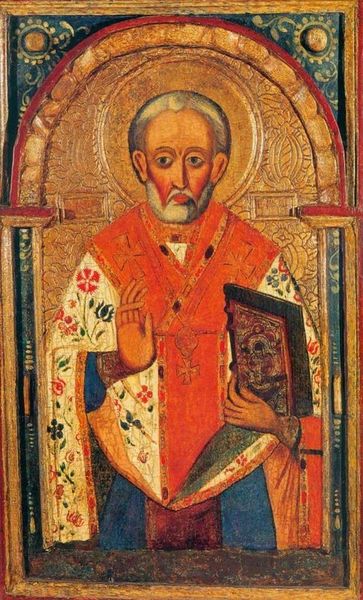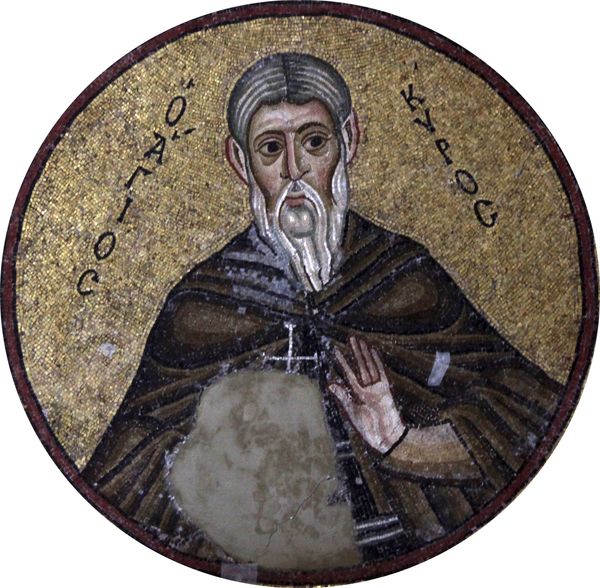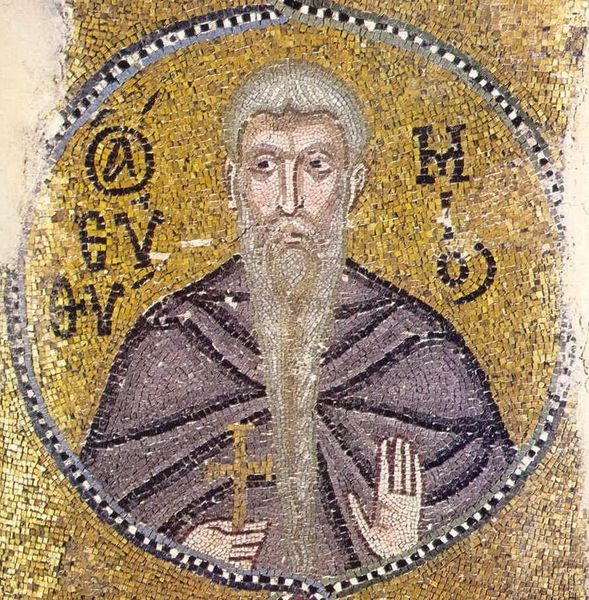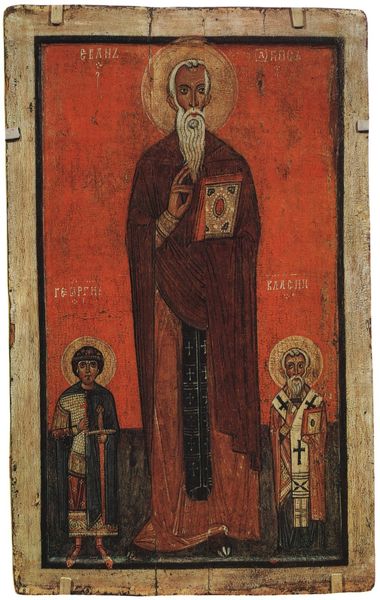
tempera, painting
#
portrait
#
byzantine-art
#
medieval
#
tempera
#
painting
#
oil painting
#
portrait art
Dimensions: 58.2 x 44.9 cm
Copyright: Orthodox Icons,Fair Use
Curator: Welcome. Here we see a tempera on wood panel of Saint Antipas of Pergamum dating back to around 1300, currently located at Saint Catherine's Monastery. Editor: The patina of time is just magnificent; it makes the deep reds and blues feel aged, earthy... even a bit melancholy. I can only imagine the hands that held this object in devotional practices. Curator: Let’s delve deeper into its formal composition. Note the iconographic representation adheres to Byzantine conventions, evident in the elongated face, flattened perspective, and the linear folds of his garments. The careful balancing of the gold leaf elements creates a luminous surface, don’t you think? Editor: Indeed. Considering the material aspects, this icon was not simply *made,* but actively crafted within a rigorous guild system, each material component contributing to a codified expression. I’m fascinated by how the tempera, derived from natural pigments and egg yolk, yields such enduring luminescence. It represents, quite literally, an emulsification of art and life. Curator: And we can read the layering of those components. Observe the careful attention paid to hierarchical scale—Saint Antipas’s prominent central positioning emphasizes his spiritual significance, while the restrained palette intensifies focus on the symbolic aspects rather than attempting naturalistic representation. It signifies holiness not by earthly means but through transcendental visual cues. Editor: Though I appreciate the intended effect, the production, however, raises intriguing questions about sourcing. Where did the specific pigments come from, and under what labor conditions were these raw materials acquired and processed to reach this hallowed object? These details give insights to broader economies in service of religious needs. Curator: A very worthwhile question to investigate. Let us end by admiring the delicate craftsmanship evident even across the ages. Editor: Truly—it acts not simply as aesthetic achievement but rather serves as document attesting centuries both reverential care but potentially to exploitative production chains.
Comments
No comments
Be the first to comment and join the conversation on the ultimate creative platform.
